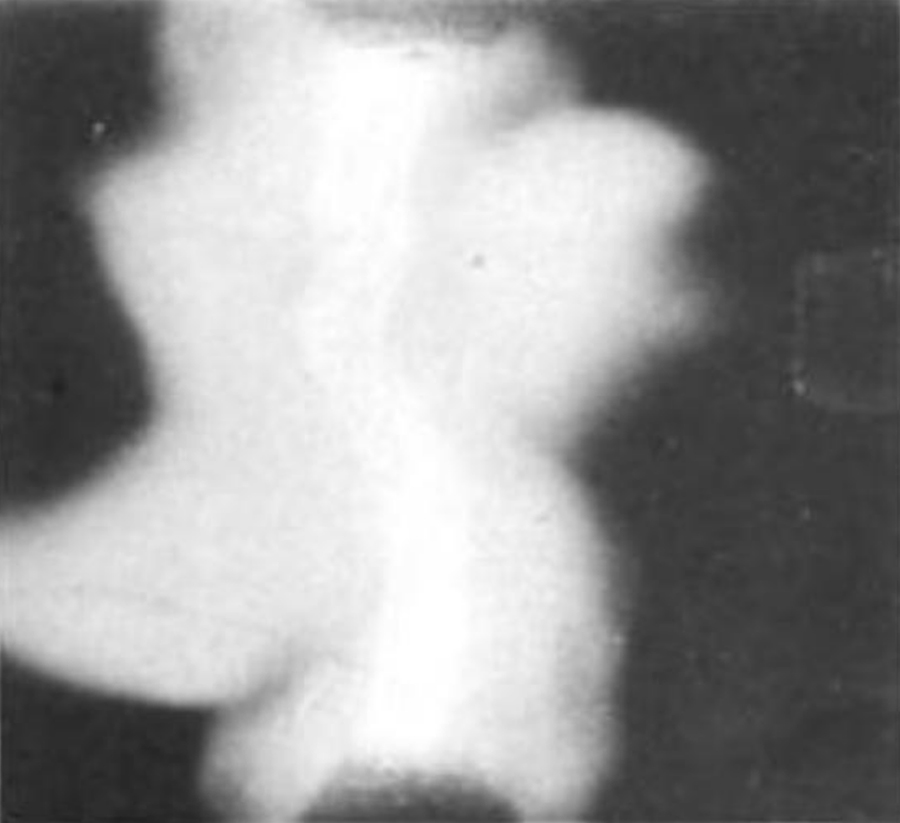and is propagated toward the poles

*
Plate 9, Fig. 16
(cropped to square)
ex Arthur Schuster (1851-1934 *) and Gustav[e] [Adolphe] Hemsalech (1875-1936 *). "On the Constitution of the Electric Spark." Philosophical Transactions of the Royal Society of London. Series A. Vol. 193. (1900) : 189-213 (and plates 8-12)
Stanford copy, no date of digitization
different scan, different copy (opening to same plate) at archive.org
epigram from conclusion / 213
Figs. 15 and 16, Plate 9, November 13, 1897. —
Sparks taken under similar circumstances as fig. 14. In fig. 16 a current of air is blown through the spark gap. The effect of this current of air is remarkable, as the time of luminosity of the air column was found in subsequent experiments to be less than 10-6 second, and the actual displacement of the air during that time must have been quiet unappreciable. The most probable explanation is that the spark passes through those portions of the air which have been made conducting by preliminary invisible discharges. The air put into the sensitive state by these first partial discharges has time to move over a sensible distance before the main spark passes. ¶ It is remarkable how the metallic vapours in this photograph seem to be drawn into the glass tube.
200
30 October 2015
tags: air; clouds; luminosity; metallic vapours; poles; sparks; vapours; A. Schuster and G. Hemsalech